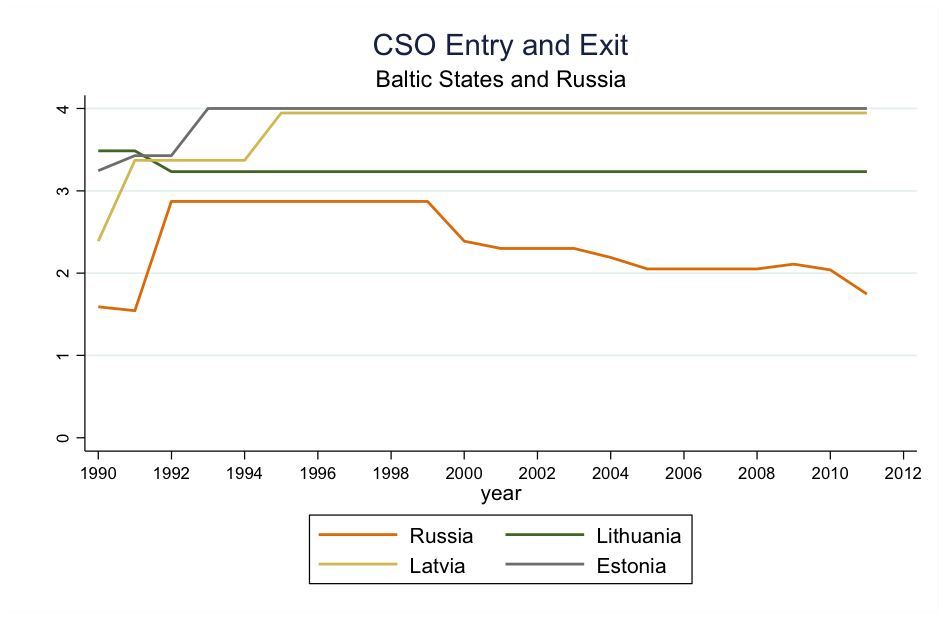V-Dem indicators for Eastern Europe and Russia
By: V-Dem Staff
Oct 19, 2015
The graph below includes the V-Dem indicator civil society entry and exit for Estonia, Latvia, Lithuania and Russia.
The measure captures to what extent the government achieves control over entry and exit by civil society organizations (CSOs) into public life.Both Estonia and Latvia achieve a maximum score on this indicator in the first half of the 1990s, suggesting that entry and exit by CSOs since then is unconstrained. The government does not impede the CSOs formation and operation unless they are engaged in activities to violently overthrow the government.
In Lithuania, on the other hand, the government’s control over civil society organizations increases slightly in the beginning of the 90s. Since then and up to 2012, constitutional provisions exists, allowing the government to ban organizations or movements that have a history of anti-democratic action in the past, as implied by the score of 3 on the scale of 1 to 4. Such banning, however, takes place under strict rule of law and conditions of judicial independence.
A substantial decrease in government control over CSOs takes place following the dissolution of the Soviet Union in 1991. For most part of the decade the level of CSO control in this aspect is nearly the same in Russia as in Lithuania. Just before the Millennium shift and in relation to Putin’s rise in power, the country starts to decline and continues to do so, with periods of stagnation, until 2012. At this point, Russia receives a score of just under 2, which suggests that substantial control of CSOs by the government exists. The government licenses all CSOs and uses political criteria to bar organizations that are likely to oppose the government. There are at least some citizen-based organizations that play a limited role in politics independent of the government, but the government actively represses those who attempt to flout its political criteria and bars them from any political activity.


